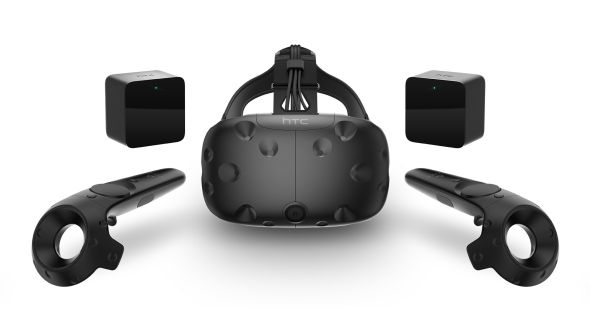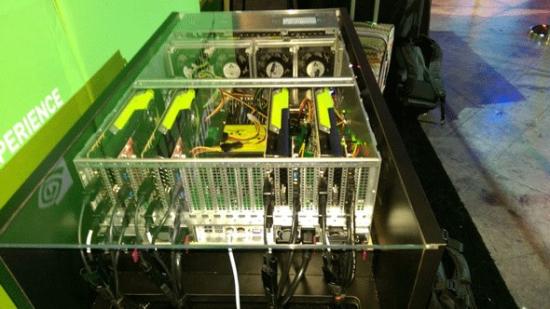Nvidia have created a prototype machine capable of running four VR headsets from one box, an advance that could see VR arcades explode in popularity.
You need some beefy graphics tech to run VR, so here’s our pick of the best graphics cards around today.
Nvidia’s GPU Technology Conference 2017 is kicking off this week, and tech aficionados have converged on Silicon Valley to press the flesh and learn about the next innovations to rock the industry. So it’s the perfect time for Nvidia to show off some new tech. No, not Volta, not yet. We’re talking VR tech, to be precise. They’ve unveiled a proof-of-concept machine (as yet without a catchy title) which aims to streamline multi-user VR into just one box.
In this particular case, four HTC Vive headsets can be used simultaneously, running off four of Nvidia’s professional-class Quadro P6000 GPUs, each of which is running its own virtual machine. Using HTC/Valve’s Lighthouse system to track user movement, all four VR peops can inhabit the same virtual space.
In their blog outlining their plan to showcase the new machine at the GTC event this week, Nvidia aim to provide the tools for immersive multiplayer experiences that have applications as far-ranging as military training and multi-user design tasks. From a gaming perspective, those with dusty pockets could find the easiest way to get into virtual reality would be heading to their nearest VR arcade. Combining this hardware with HTC’s Viveport Arcade software should soon see users enjoying a variety of multiplayer treats.

Nvidia say “the possibilities are endless” and claim that by “[minimising] the space, power and cooling required,” the machine will be ideally placed to be speedily set up in ‘location-based VR environments’ such as the aforementioned arcades, and in pop-ups at cinemas and shopping centers as well as quirkier locations such as naval ships for use in training.
In creating this monster (four P6000 cards ain’t cheap), Nvidia have stumbled upon other applications for this tech as well, such as ‘a mixed-reality spectator view’ where multiple virtual machines will allow participants to get on with the hard gaming work while others drive ‘virtual cameras’ for those wanting to observe. Tying this in with their release of VRWorks Audio – a technology that tracks the path of audio through a virtual environment and emulates sound reflection, refraction and diffraction to adjust the sounds the user hears – it would seem breathtakingly impressive VR machines are tantalisingly just over the horizon.
Playing games in the same space as your friends has long since taken a backseat to the infinitely more convenient online alternative, but those pining for the days when they would game in the same physical place as their friends may be excited at the prospect of once again being able to reach out and punch their victorious opponent.
It’s also a common complaint that advances in technology have the potential to reduce social interaction, but this advance may in fact have the opposite effect. While VR of this calibre still remains prohibitively priced for home users, Vive, Oculus and Nvidia’s AMD rivals are all behind the rise of location-based VR, so this sort of tech could see a genuine resurgence in the arcade in coming years.
“Once people have tried [VR] they’re going to want it to be richer, deeper and more immersive. This is why also location-based is such a huge deal,” AMD’s Roy Taylor told us a few weeks ago at Bristol’s VR World Congress. “That means even if you don’t have the money to buy a system at home, even at £500, £600 or £800, you could just go along to wherever the location-based setups are, pay £10 and experience the very, very best.”
